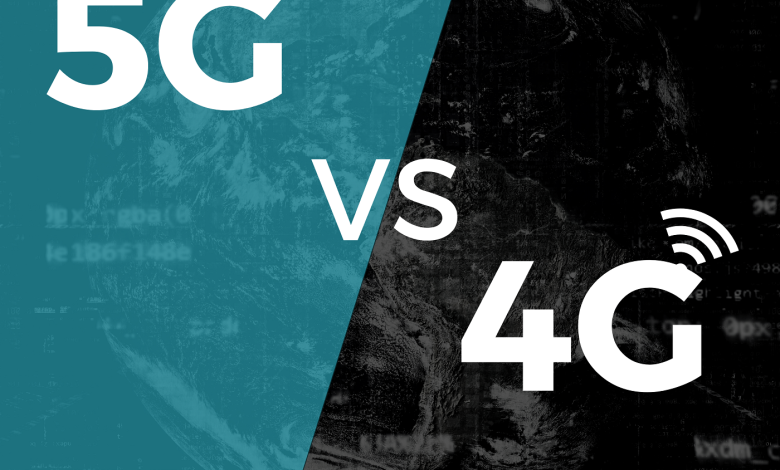4G v/s 5G : Everything you need to know about

Up to 438 million 5G connections will exist by 2021.
From providing internet access to powering complicated infrastructures, connectivity has progressed. Smart cities, for example, use the Internet of Things (IoT) technology to connect everything. From smartphones, houses, and cars to traffic and waste collection systems.
Wireless technologies rely on performance trade-offs with IoT devices on their networks. From Bluetooth and WiFi to 3G and 4G LTE.
With 5G, things are different.
5G is 100 Times Faster Than 4G:
5G networks can give the level of performance required for an increasingly connected world. With speeds of up to 10 gigabits per second – up to 100 times faster than 4G.
What’s the end result?
For example, downloading a high-definition film via a 4G network takes 50 minutes on average. But only nine minutes on 5G. The amount of connectivity required varies depending on the network’s purpose. Streaming a movie on your smartphone and driving your connected car require different levels of connectivity that 4G doesn’t always provide.
Network Slicing:
The introduction of 5G can address this because ‘network slicing,’ or splitting the network to adjust speed, capacity, coverage, encryption, and security by reassigning resources from one slice to another that need it, becomes much easier.
To put it another way, each slice will rely on a unique slice SIM,’ also known as the’sSIM,’ which will be stored in your 5G SIM, similar to how each flat in a building has a unique key to allow only allowed persons to access.
Low Latency:
With 5G, the better performance also implies decreased latency (the delay between sending and receiving information).
This is 200 milliseconds for 4G, which is close to the 250 milliseconds it takes humans to respond to visual input. The delay rate for 5G is substantially lower: only 1 millisecond.
Connected automobiles and vehicle-to-vehicle information (aka V2X), virtual-reality gaming, remote surgical operations, and translation software will all benefit from the use of 5G networks to send and receive data swiftly. To put it another way, IoT and 5G are a perfect match.
5G: More Security and Data:
However, increasing opportunity comes with an increased danger, thus 5G implementation must have the appropriate level of security to enable confidence.
Private mobile networks will be more widely deployed, and third-party vendors will have more network access, all of which will increase the number of hacking options.
As a result, the EU is urging suppliers, network operators, and regulators to engage in a dialogue in order to discover and implement solutions to avoid these risks.
Following the GDPR, which became the global standard for data protection in 2018, the EU is working on the ePrivacy Regulation (ePR).
The GDPR attempts to protect personal data, while the PR focuses on people’s privacy when it comes to electronic communications.
The 5G SIM is once again the defender of the user’s privacy.
As customers look to the future,It will be about more than just faster mobile internet. as it will provide new levels of connectedness – and trust – to a broader ecosystem.
For telecom providers, It brings both potential and challenges.
Can act as many networks
While 4G networks were primarily developed for phones.Networks were created with a far broader range of applications in mind, obviating the necessity for several specialized networks. They can even work as a number of different networks at the same time.
In comparison to 4G, 5G technology can deploy many new applications that will improve the quality of life. The massive connectivity of it will benefit everyone including, workers, gamers, business people, students, and all in between.In terms of applications, speed, latency, and technology, 5G is far better than 4G. It is the future of cellular networks.
However, instead of waiting for the networks to rollout fully, you can still build the future with the available 4G technology. And can completely use the benefit of networks when it is available widely.





